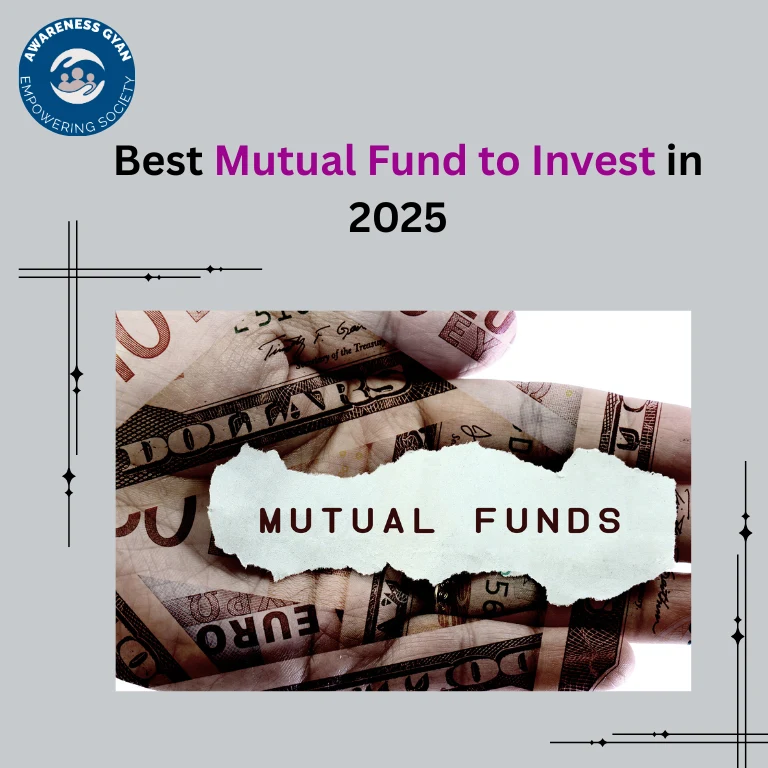Best Small-Cap Mutual Fund: A Simple Guide for 2025
When I first heard about small-cap mutual funds, I was both excited and nervous. These funds invest in small-sized companies—ones that aren’t huge yet but have a chance to grow fast. Sounds amazing, right? But small-cap funds can be unpredictable, too.
In this guide, I’ll walk you through what the best small-cap mutual fund looks like, why you might consider one, and how to choose wisely. I’ll keep it easy, honest, and all human—no robotic tone. Let’s get started!
What is a Small-Cap Mutual Fund?
A small-cap mutual fund is like a treasure hunt. It invests in small companies with big potential. These firms are usually outside the top 250 listed companies by market size.
You buy units of the fund, and professionals handle the rest. The hope? These companies grow, their value goes up, and so does yours. But it’s not always smooth—it’s a roller coaster ride!
Why Choose a Small-Cap Mutual Fund?
You might wonder why choose a small-cap fund when larger companies feel safer. Here are three honest reasons:
- High Growth Potential
Some small companies can double or triple in value once they grow. That’s exciting compared to slow-moving giants.
- Diversification Boost
A small-cap fund adds spice to your portfolio. Mix it with large- and mid-cap funds, and you balance risk and reward.
- Early Advantage
Investing in a growing company early can give big rewards later. It’s about spotting tomorrow’s winners today.
Just remember: good returns come with risk. That’s why picking the best small-cap mutual fund is key.
What makes the “Best Small-Cap Mutual Fund”?
Not every fund is worth it. Here are what I look for:
- Long-Term Track Record
Don’t chase one-year fireworks. Look at 3–5-year performance. Consistency matters.
- Low Expense Ratio
Lower cost means more of your money stays invested.
- Proven Fund Manager
Someone who knows the small company space and has a disciplined process.
- Manageable AUM
Too large, and they can’t invest in smaller opportunities. But too small can be risky. I aim for ₹3,000–30,000 Cr.
- Good Risk Metrics
Look at volatility (beta) and how it performed during market dips.
Top 5 Best Small-Cap Mutual Funds for 2025
Based on a mix of recent performance and long-term strength, here are the best small-cap mutual funds I’ve come across:
1. Quant Small-Cap Mutual Fund
- AUM: ₹28,205.21 crore
- 5-year CAGR: -2.15%
- 1-year return: 43.97%
- Fund Manager: Mr. Sandeep Tandon
- Sector Allocation
| Sector | Allocation (%) |
| Financial Services | 17–20% |
| Capital Goods | 12–15% |
| Chemicals | 10–13% |
| Power & Utilities | 8–11% |
| Construction/Infrastructure | 6–9% |
| Services (Travel, Retail, etc.) | 5–7% |
| Consumer Durables | 4–6% |
| Others & Cash | Rest (~15%) |
Quant Small Cap Fund: Pros, Cons & Key Insights
Pros of Quant Small Cap Fund:
- High Growth Potential
- Active Management:
- Strong Past Performance
- Diversified Portfolio
- Suitable for SIPs
Cons of Quant Small Cap Fund
- Very High Risk
- Not Ideal for Short-Term Goals
- High Turnover
- Performance Can Be Cyclical
Why I like it: Aggressive and well-researched, this fund often leads to small-cap returns. But expect wild rides.
2. Nippon India Small-Cap Mutual Fund
- AUM: ₹63,006.73 Crores
- 5-year CAGR: 37.82%
- 1-year return: 0.02%
- Fund Manager: Mr. Dhrumil Shah
- Sector Allocation:
| Sector | Allocation (%) |
| Capital Goods | 17–20% |
| Chemicals | 10–13% |
| Consumer Services | 8–10% |
| Financial Services | 7–9% |
| Engineering & Construction | 6–8% |
| Healthcare & Pharma | 6–8% |
| Textiles & Manufacturing | 5–7% |
| Others + Cash | Remaining (~20%) |
Nippon India Small-Cap Mutual Fund – Pros, Cons & Key Insights
Pros of Nippon India Small Cap Fund
- Long-Term Wealth Creation
- Experienced Fund Management
- Well-Diversified Portfolio
- Consistent Performance
- Great for SIPs
Cons of Nippon India Small Cap Fund
- Very High Risk
- Not Meant for Short-Term Goals
- Can Be Overdiversified
- Market-Linked Returns
- Needs Patience and Discipline
Why it stands out: Reliable track record, managed by Nippon’s experienced team. Good blend of growth and discipline.
3. Invesco India Small-Cap Mutual Fund
- AUM: ₹6,822.51 crore
- 5-year CAGR: 33.82%
- 1-year return: 11.21%
- Fund Manager: Mr. Taher Badshah and Mr. Pranav Gokhale
- Sector Allocation:
| Sector | Allocation (%) |
| Capital Goods | 18–20% |
| Chemicals | 10–12% |
| Construction & Engineering | 9–10% |
| Consumer Durables | 7–9% |
| Auto & Auto Components | 6–8% |
| Financial Services | 5–7% |
| Healthcare | 4–6% |
| Others + Cash | Remaining (~20%) |
Invesco India Small Cap Fund- Pros, Cons & Key Insights
Pros of Invesco India Small Cap Fund
- Quality-First Approach
- Strong Long-Term Returns
- Risk-Adjusted Strategy
- Diversification
- Disciplined Stock Picking
Cons of Invesco India Small Cap Fund
- Still Volatile
- Liquidity Risk
- Less Aggressive Than Peers
- Not Ideal for Short-Term Investors
Why I rate it: Great returns and sharp stock picking. Balanced exposure makes it a solid choice.
4. Tata Small-Cap Mutual Fund
- AUM:₹10,529.36 crore
- 5-year CAGR: 36.01%
- 1-year return: 4.73%
- Fund Manager: Mr. Abhinav Sharma
- Sector Allocation:
| Sector | Allocation (%) |
| Industrial Manufacturing | 17–19% |
| Consumer Durables | 11–13% |
| Chemicals | 9–11% |
| Auto Components | 8–9% |
| Capital Goods | 7–8% |
| Healthcare | 6–7% |
| IT & Software | 5–6% |
| Others + Cash | Remaining (%) |
Tata Small Cap Fund – Pros, Cons & Key Insights
Pros of Tata Small Cap Fund
- Steady Performance with Lower Risk
- Focus on Sustainable Businesses
- Well-Diversified Portfolio
- Experienced Research Team
- Suitable for SIP Investors
Cons of Tata Small Cap Fund
- Slow During Bull Runs
- Limited Track Record
- Low Liquidity in Holdings
- Market Sentiment Sensitive
Why it shines: Strong returns with lower fees—ideal for cost-conscious investors.
5. HSBC Small Cap Fund
- AUM:₹16,061.21 crore
- 5-year CAGR: 34.93%
- 1-year return: -2.82%
- Fund Manager: Mr. Karan Desai
- Sector Allocation:
| Sector | Allocation (%) |
| Capital Goods | 17–18% |
| Industrial Manufacturing | 14–15% |
| Chemicals | 11–12% |
| Financial Services | 10–11% |
| Healthcare/Pharma | 7–8% |
| Auto Components | 6–7% |
| Textiles & Others | Remaining |
HSBC Small Cap Fund– Pros, Cons & Key Insights
Pros of HSBC Small Cap Fund
- Aggressive Yet Balanced Approach
- Strong Long-Term Potential
- Low Overlap with Large & Mid-Cap Funds
- Backed by Global Expertise
- Good SIP Track Record
Cons of HSBC Small Cap Fund
- Higher Volatility in Market Downturns
- Relatively New Strategy
- Low Liquidity in Some Holdings
- Requires Patience
Why it’s special: Good risk controls and a steady growth path. Solid for those wanting more cautious exposure.
How to Invest in These Funds
Want to try the best small-cap mutual fund? Here’s a simple plan:
- Set Your Goal
Think long-term—5–7 years or more—for retirement, education, or wealth building.
- Choose 1–2 Funds Only
Too many funds mean confusion. Start with one or two top picks.
- Begin with a SIP
Invest ₹1,000–₹3,000 monthly. SIPs smooth out market highs and lows.
- Stay Invested
Reward only comes if you hold on through ups and downs. Avoid panic when things dip.
- Review Once a Year
Look at performance, risk, and manager consistency. If things are still good, stay. If not, review.
Final Thoughts
Choosing the best small-cap mutual fund is more about patience than precision. You want:
- A consistent performer
- A smart team is running it
- Promising small companies in the mix
Yes, the ride can be bumpy. But with a clear plan, small caps can be a fast lane to wealth when managed properly.
For more insights and latest updates, follow us on our YouTube channel, where we simplify investing, fund reviews, and smart money tips!
Explore More: Visit Awareness Gyan to stay updated with smart financial tips, mutual fund insights, and wealth-building strategies that work in India.
FAQ – Small Cap Mutual Fund
Q1: Are small-cap funds risky?
Yes. They can swing more than large or mid-caps, especially in market drops.
Q2: How long should I stay invested?
Minimum 5 years. The good ones shine after 7–10 years.
Q3: Can I start with ₹1,000?
Absolutely! SIPs allow small monthly starts.
Q4: Which is the best small-cap mutual fund right now?
Quant Small Cap Fund leads for returns, but Nippon, Invesco, Tata, and HSBC are solid in performance and reputation.
Q5: Should a small-cap fund be a big part of my portfolio?
Treat it as 10–20% of your equity corpus. Mix with large- and mid-cap funds to manage risk.



